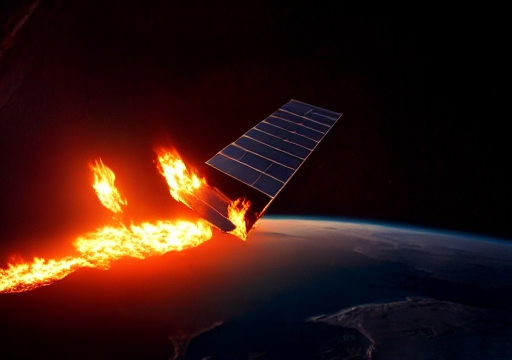Last week, 20 of SpaceX’s Starlink satellites met their fiery demise after a Falcon 9’s second stage engine failed. The satellites were placed in a lower orbit than planned and space weather ultimately doomed the company’s efforts to raise the satellites into a higher altitude that could salvage at least some of the Starlinks.
Shortly after the rocket engine failed, SpaceX raced to gain control of the satellites and perform a “Warp 9”, which is setting the on-board ion thrusters to maximum burn in an attempt to gain altitude. Unfortunately, an unusually thick atmosphere caused by recent high solar activity complicated an already difficult situation. The extra atmospheric drag from the solar activity sealed the satellites’ fate. It has been reported that all 20 Starlinks deorbited on July 12, 2024.
This isn’t the first time space weather has been a problem for Starlink. Back in February of 2022 unexpected space weather caused the reentry of 38 Starlink satellites. A few other satellite companies have cited space weather as the main reason for their satellites not being able to meet their intended mission life. Space weather is becoming an increasingly sharp thorn in the industry’s side and it doesn’t help that we are nearing the maximum of the sun’s 11-yeaar solar cycle.
Recent solar activity included a powerful X-class solar flare from sunspot AR3738, which did not produce a geomagnetic storm but still caused a fair amount of headaches as radiation from the solar flare ionized the top of Earth’s atmosphere, causing shortwave radio blackouts over Australia, Southeast Asia, and Japan. According to spaceweather.com, mariners and ham radio operators in the area may have noticed a 30-minute loss of signal at all frequencies below 25 MHz.
Forecasts suggest that further solar explosions are possible. We can’t do anything to change the sun or space weather however, we can collect more data to improve our predictions. For the future of the smallsat and commercial space industry, it is important to start looking for solutions. By collecting more space weather in-situ we can improve satellite design and harden sats to survive increases in atmospheric drag. Several solutions are on the horizon and we will be posting about these in upcoming blogs so stay tuned.



